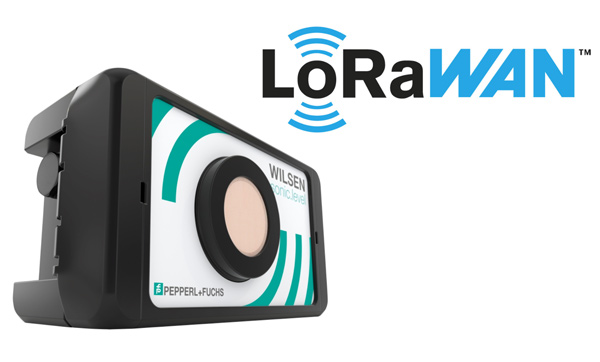5 Reasons for the Industrial Use of LoRaWAN Technology
Content of This Article
5 Reasons for the Industrial Use of LoRaWAN Technology
As Industry 4.0 grows, interest in radio-based sensors is also increasing. LoRaWAN (Long Range Wide Area Network) is one technology that is becoming more and more popular in this context and is attracting the attention of industrial companies. In this blog article, find out what advantages LoRaWAN technology offers and if it could benefit your application.
1. Long Range, Low Energy Consumption
LoRaWAN is a so-called LPWAN radio technology (Low Power Wide Area Network). Compared to conventional WLAN, this radio network can achieve long transmission ranges (up to 15 km) without consuming much energy. Whenever sensor data must be obtained from widely dispersed measurement points, LoRaWAN is the ideal solution. Points can include waste containers distributed across an urban area or containers with raw and auxiliary materials in circulation on a large work site. Because of the low energy requirement, radio sensors based on LoRaWAN can also operate for several years without a single battery change. This saves time and money.
2. Cost-effective Data Transmission
In addition to the low energy consumption, another factor helps industrial companies keep operating costs (OPEX) as low as possible: Since LoRa works in the license-free frequency range, it is possible to set up private company networks that do not incur additional costs for sending sensor data. Alternatively, cost-effective access to public LoRa networks, which are already made available nationwide by telecommunications companies in countries such as the Netherlands, South Korea, and Switzerland, is also possible.
3. Through Walls
Anyone who has tried unsuccessfully to set up a WLAN that works on every floor of their home knows the problem: Concrete and steel quickly become a seemingly insurmountable obstacle to radio transmission. In industrial use, this problem is exacerbated due to high demands on the availability and integrity of data. LoRaWAN transmits in the subgigahertz range, which means that the radio signal from a LoRa sensor can successfully transmit through several concrete walls. This makes the technology suitable for indoor and outdoor use, for example, in situations where the gateway inside a company building can receive signals from sensors distributed across company premises. LoRa sensors can also broadcast from cellars and other underground areas.
4. Easily Expandable Radio Network
Once a company-owned LoRaWAN has been set up, the star-shaped network structure can be expanded quickly if necessary. No costly and time-consuming network plan is required to add more gateways—they simply fit into the existing network structure. As an added benefit, more gateways can connect more sensors and transmit the sensor data faster. This leads to a longer service life for the battery-operated radio sensors.
5. Safe Transmission
The requirements for secure data transmission are significantly higher in industrial environments than in other areas. With LoRaWAN technology, the data is encrypted as it travels from the sensor to the internet software application using the AES128 standard. With this end-to-end encryption, this LPWAN technology is a good option for industrial companies to transmit data wirelessly.

Get to know the WILSEN.sonic.level. The battery-powered IoT sensor from Pepperl+Fuchs is based on ultrasonic technology and uses LoRaWAN for data transmission: WILSEN.sonic.level
More Information
Subscribe to our newsletter and receive regular news and interesting facts from the world of automation.
